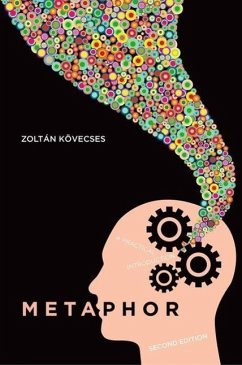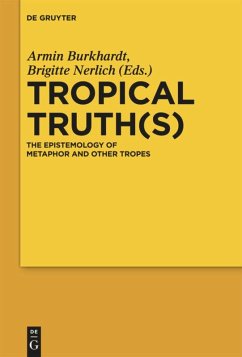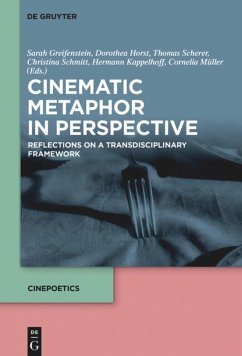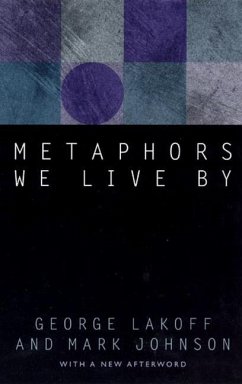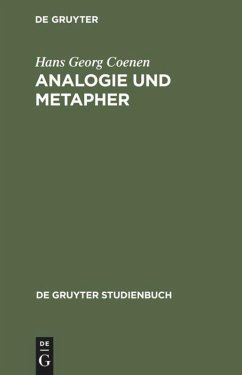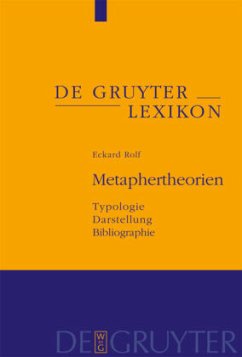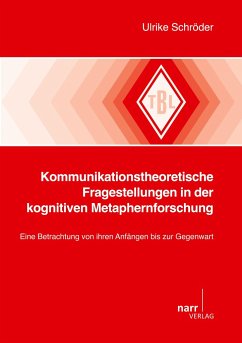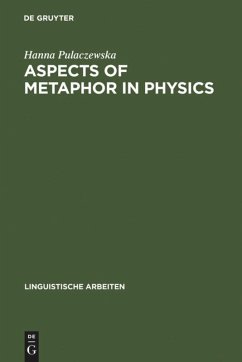
Aspects of Metaphor in Physics
Examples and Case Studies

PAYBACK Punkte
40 °P sammeln!
Seit Dekaden weiß man, daß die Naturwissenschaftler und ihre Sprachen keine metapherfreien Gebiete sind. Die Arbeit resümiert, was in dem von Wissenschaftshistorikern und -philosophen dominierten Diskurs über dieses Phänomen gesagt worden ist und zeigt neue Perspektiven fächerübegreifend, doch aus einer primär kognitiv-semantisch geprägten Sicht. Wie tritt die Metapher in den Diskurs mit der Physik ein? Inwieweit sind die Methoden und Fragestellungen der Physik durch Metaphern beeinflußt? Wie helfen uns die allgegenwärtigen Metaphern der Alltagssprache, dem physikalischen Wissen eine Struktur zu geben und das Abstrakte in konkreten Bildern auszudrücken? Anhand einer Fülle von Beispielen werden diese und verwandte Fragen erörtert.
For decades there has been awareness of the fact that the natural sciences and the language they use are not metaphor-free domains. This study draws together statements on this phenomenon made in a discourse context hitherto dominated by theoreticians and philosophers of science and points up new perspectives of an interdisciplinary nature discussed here primarily from the viewpoint of cognitive semantics. How do metaphors enter into a discourse with physics? To what extent are the methods used and the issues addressed in physics influenced by metaphors? How do the ubiquitous metaphors of everyday language help us to impose a structure on physics knowledge and express abstract ideas in concrete images? These and other related issues are discussed with reference to copious examples.
For decades there has been awareness of the fact that the natural sciences and the language they use are not metaphor-free domains. This study draws together statements on this phenomenon made in a discourse context hitherto dominated by theoreticians and philosophers of science and points up new perspectives of an interdisciplinary nature discussed here primarily from the viewpoint of cognitive semantics. How do metaphors enter into a discourse with physics? To what extent are the methods used and the issues addressed in physics influenced by metaphors? How do the ubiquitous metaphors of everyday language help us to impose a structure on physics knowledge and express abstract ideas in concrete images? These and other related issues are discussed with reference to copious examples.
With reference to copious case studies, this book attempts to give a broad and comprehensive view of the multiplicity of forms taken by metaphor in physics. A diachronic presentation of the views hitherto advanced on the role of metaphor in the natural sciences provides an introduction to the crucial issues. By means of a broad definition of metaphor as a lexical, semantic, and conceptual phenomenon, metaphor is identified at various levels of physics discourse: in metatheory and methodology; in the sociology of the origin and evolution of science; in theory and conceptualization, including physics models; in education; and finally in linguistic expression, including terminology. Whereas historians and theoreticians of science reduce the question of metaphor in physics to the question of the role of scientific models, where one area of physics provides concepts and structures for another area, the perspective adopted here is that of cognitive semantics. The study inquires into the way in which concept-formation and terminology in physics avails itself of the metaphoric bent immanent in everyday language, conceptualizing abstract ideas in spatial terms, inanimate things as intelligent, measurable phenomena in terms of the visual. Attention is also given to the way in which metaphoric processes make it possible to integrate new knowledge into old and sometimes obsolete structures rather than eliminating those structures altogether.




